Phenom II Budget
Our aim in the Phenom II budget system is to provide a configuration that allows for a nice balance of performance at stock speeds. This doesn't mean you have to spend a lot of money though, as Phenom II prices start at $120 now that the competitive dust has settled. In addition, other component prices have dropped in the past six months and performance for the dollar has definitely increased.
The budget build is around $750 complete with a 1080p LCD Monitor, speakers, Vista Home Premium OS (OEM), and a mouse and keyboard. The basic box is just over $400 with a case and Gold Editors' Choice 550W PSU. If you are pinching pennies, you can go with a name brand case/power supply combo and get the basic Phenom II box below $400. The assembled system is balanced for a wide variety of computing tasks, but final tweaks can tilt it toward gaming and graphics for example, if that is what you aim for.
Generally we consider PC gaming rigs to begin at the next price category (i.e. the low end of midrange), but adding a decent graphics card will definitely make the Phenom II budget system, built around the AMD Phenom II X3 710, a good choice for entry gaming at around $850. Just add the $100 Radeon 4850 from the value systems on the next page.
| AMD Phenom II Budget PC | ||
| Hardware | Component | Price |
| Processor | AMD Phenom II X3 710 (2.6GHz x3, 3x512KB L2, 6MB L3 Cache) |
$119 |
| Cooling | CPU Retail HSF | - |
| Video | On-Board | - |
| Motherboard | ASRock A790GXH/128M AM2+ | $95 |
| Memory | OCZ Reaper 4GB DDR2-1066 OCZ2F10664GK ($61 with $25 rebate) | $36 |
| Hard Drive | Seagate Barracuda 7200.12 ST3500418AS 7200RPM 16MB Cache 500GB | $60 |
| Optical Drive | Samsung 22X DVDRW/DL SH-S202G | $25 |
| Audio | On-Board | - |
| Case | Cooler Master Elite 330 RC-330-KKN1-GP Mid Tower | $40 |
| Power Supply | BFG Tech LS Series LS-550 550W SLI Certified, CrossFire Ready, 80 PLUS Certified (After $20 Rebate) | $60 |
| Base System Total | $435 | |
| Display | ViewSonic VX2233wm Black 21.5" 5ms Widescreen 16:9 LCD (1920x1080) | $180 |
| Speakers | Logitech S-220 17W RMS 2.1 Multimedia Speaker | $24 |
| Input | Microsoft CA9-00001 Black PS/2 Standard Keyboard and Optical USB/PS2 Mouse - OEM | $17 |
| Operating System | Microsoft Vista Home Premium OEM | $99 |
| Complete System Bottom Line | $755 | |
The Phenom II x3 710 is the least expensive Phenom II you can buy, but it is still a tri-core design clocked at 2.6GHz with the same L1/L2/L3 cache as the more expensive Phenom II designs. The 710 provides plenty of power at stock speeds, but if you want more the 45nm Phenom II processors overclock very well. If you want a bit more performance, overclocking the 710 should be fine, but if you want to seriously explore overclocking you can spend $20 more for the 720BE that has an unlocked multiplier.
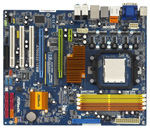 |
We've paired the Phenom II 710 with the ASRock 790GXH/128M AM2+, a perfect match for those looking to squeeze as much performance out of their money as possible. The ASRock is loaded with overclocking features and includes integrated AMD HD 3300 graphics with an HDMI/DVI interface and 1080p support. This means very decent performance using the onboard graphics. This ASRock board offers both AM2+ and AM3 CPU support for processors like the Phenom II 710 when used with cheaper DDR2 memory. ASRock includes 128MB DDR2 sideport memory for improved GPU performance, VIA VT1708S 7.1 Audio codec, Gigabit LAN, 16GB memory support, six 3Gb/s SATA ports capable of RAID 0/1/10/5, a PATA port, 10 USB ports, two PCI-E x16 slots (dual x8 CF), one PCI-E x1 slots, and two PCI slots. The BIOS caters to the casual overclocker and this board performs very well in a variety of tests.
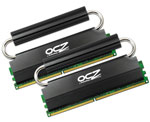 |
We've chosen OCZ Reaper 4GB DDR2 1066 (PC2 8500) in a 4GB kit for just $36 after a $25 rebate. This is a great value in DDR2-1066 memory from a top memory supplier. The extra 1066 speed combined with the fast 5-5-5 timings lets you run your memory at a faster speed or provide reserves for overclocking the CPU. OCZ is a great memory choice, but there are many memory options at great prices today. Quality DDR2-800 and DDR2-1066 RAM from Corsair, OCZ, G.Skill, Mushkin, Patriot, and GeIL are available at any of the major online retailers. Just be sure to look for RAM with better timings if you can afford it.
 |
The hard drive is a 500GB Seagate Barracuda at just $59. If you'd prefer a larger drive you can substitute a 1TB Seagate for just $85 - only $25 more for twice the capacity. The DVD burner is a dependable Samsung 22X often chosen for budget builds. If you want alternatives, as always you can look to the other builds for larger drives and Blu-ray support.
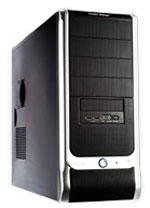 |
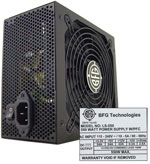 |
The case/PS is the Cooler Master Elite 330 and our AnandTech Gold Editors' Choice BFG Tech LS Series LS-550 550W power supply. The BFG currently has a $20 rebate that reduces the final cost to $60. The BFG is a great power supply, but you could save a few dollars here with an OCZ, Corsair, or PC Power & Cooling PSU, which are often on rebate in recent months. It all depends on the timing of your system purchase.
 |
The LCD display was an easy choice with the full HD Viewsonic 16:9 widescreen for just $180. A 21.5" monitor with 1920x1080 resolution with a 3-year warranty from a major monitor maker is certainly a good value. If you prefer a larger screen, you can find a 23" widescreen starting at $190, though most 24" are $250 or more. If you need to save a few dollars a lower resolution 19" or 20" would do.
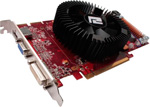 |
If you want more video power for gaming you can add an ATI HD 4830 for just $75-$90. This will get you into gaming and it is a terrific value at this price according to our Graphics Editor. He recommends the Radeon HD 4850 as the start of true HD gaming starting at just $100 after current rebates, or a Radeon HD 4870 512MB which you can find for as little as $155. Any of these three cards would still keep your total well below $1000. Even with the addition of the powerful 4870 512MB the complete system price would be just $910.










60 Comments
View All Comments
Proteusza - Tuesday, April 28, 2009 - link
Ha ha, since even the writer of the article questioned your integrity, I think its fair to say you are the greater troll than I.So wait... you are saying the benchmark doesnt count because its GPU bound, but you also say Phenom II is not a great gaming platform? Seems to me, that since the benchmark in question is of a GAME, that it kinda matters for determining how good it would be for gaming. And, as I said, you would be paying a few hundred dollars extra for 0.6FPS more. Now why would you do that? Nehalem may well overclock slightly better, but you said so yourself, its GPU bound, if the Phenom II gets to 3.8GHz and the Nehalem gets to 4.0GHz, its not gonna matter much.
Xeon and Opteron are enterprise CPUs you dolt, they require registered memory and special motherboards which are a lot more expensive. And the CPUs themselves are more expensive. Not a good gaming platform.
But really, what all of this shows is how pathetic you are, since even if AMD did release a CPU which beat Intel in every single way (and it has in the past, remember Athlon 64 vs Pentium D), you wouldnt buy it because you LOVE Intel. So I'm sure reading guides like this make you froth at the mouth, the idea that peope are buying AMD CPUs and not regretting it, but you know, thats your own fault.
tshen83 - Tuesday, April 28, 2009 - link
"Ha ha, since even the writer of the article questioned your integrity, I think its fair to say you are the greater troll than I."Only idiots let other people's opinions wash over your own thinking. Just because Jarred called me a troll doesn't mean he is right.
"So wait... you are saying the benchmark doesnt count because its GPU bound, but you also say Phenom II is not a great gaming platform? Seems to me, that since the benchmark in question is of a GAME, that it kinda matters for determining how good it would be for gaming. And, as I said, you would be paying a few hundred dollars extra for 0.6FPS more. Now why would you do that? Nehalem may well overclock slightly better, but you said so yourself, its GPU bound, if the Phenom II gets to 3.8GHz and the Nehalem gets to 4.0GHz, its not gonna matter much. "
Games are always GPU bound, and not well threaded enough. It would take a 7Ghz Phenom II to be comparable to i7 @4.0Ghz. Just because you can't tell a difference between two CPUs in some stupid games doesn't mean the two cpus are the same.
"Xeon and Opteron are enterprise CPUs you dolt, they require registered memory and special motherboards which are a lot more expensive. And the CPUs themselves are more expensive. Not a good gaming platform. "
Smart consumers are getting the enterprise features(IOAT, less power consumption, higher Tcase tolerance, more intel test validations) for free or cheaper even. There is not a single consumer CPU worth buying right now IMHO.
1. Nehalems don't need registered memory, only 2S Opterons do.(So get your facts straight before you badmouth me) 1S Opterons can use unbuffered DDR2 ECC ram also.
2.CPUs are often cheaper if you know which ones to buy: hint W3520 and E5504 and possibly E5520s. Those "server" CPUs are the best gaming platform money can buy right now. Only idiots would buy Phenoms because they think the naming must imply that the CPU is "Phenomenal" right? Did you know that all the good AMD CPUs ended up being Shanghai Opterons with synchronized integrated memory controller that scales linearly with CPU clock speed while consuming far less power? Phenoms are cheap because they are junk. Enterprise people won't buy Phenoms to power their workstations and servers, so the Dubai suckers ended up paying Anandtech to shove the Phenoms down idiots' throats, you know, people like you.
3. Dual Socket Nehalem boards can be found for about 230 now. Compared to $170 PhenomII class motherboards, it is not even close.
"But really, what all of this shows is how pathetic you are, since even if AMD did release a CPU which beat Intel in every single way (and it has in the past, remember Athlon 64 vs Pentium D), you wouldnt buy it because you LOVE Intel. So I'm sure reading guides like this make you froth at the mouth, the idea that peope are buying AMD CPUs and not regretting it, but you know, thats your own fault. "
Today's Intel isn't the Intel from PentiumD days. I had over 7 Athlon XP CPUs in my room during the PentiumD days, so please don't assume anything. I don't give a crap about Intel, and often critisize Intel's overpriced SSDs. Nehalems are hands down the best CPU since the Pentium Pros.
Last point: during an argument, don't start your offense or defense with the word "if", especially if the "if" is about "AMD release a CPU which beat Intel in every single way" It makes your whole statement false. Discreet Math 101.
JarredWalton - Saturday, April 25, 2009 - link
Not everyone needs even quad-core, let along quad-core plus Hyper-Threading. Spending $150+ to move from our performance (top-end) AMD Phenom II to a faster Core i7 920 is fine if you plan to do 3D rendering or video encoding, but most people won't notice the difference. We mentioned several times that i7 is the fastest current platform, but it's also the most expensive current platform.What is "inferior" about AMD Phenom II? Have you even used the platform, or are you looking at a few benchmarks and concluding it's "superior"? Or maybe that IN WIN PSU is "inferior"... tell me, who manufactures the IN WIN PSU? Most likely Enhance or Seasonic, given the look, and both are very good companies. IN WIN has been around a while, and that PSU launched at a price of over $200, so it's almost certainly a decent build, and an efficiency rating of over 80% gives you everything you need.
Your "dishonest" business claims are... well, I won't even bother responding to that. Basically, I'm with Wes: there's a lot of FUD being spread, with little to back it up. Who cares about Xeon processors when we're reviewing a consumer CPU? And on the server side, we've pretty clearly shown that AMD is hurting.
C'DaleRider - Sunday, April 26, 2009 - link
[quote]...tell me, who manufactures the IN WIN PSU? Most likely Enhance or Seasonic, given the look, and both are very good companies.[/quote]The proper answer is it a CWT PUC design, as attested to by JonnyGuru's test of the InWin Commander back in Jan. of this year.
Decent designed power supply, but has the usual CWT flaws...3.3V rail falls apart under high load, ripple/noise that increases to almost ATX spec limits under rated load, etc.
Not a bad supply but certainly not up to the standards of a good current designed Seasonic or Antec/Delta or Enermax build.
Summer - Sunday, April 26, 2009 - link
I would say that I'm an average consumer who uses the computer for web surfing, word processing, gaming, photoshopping and family video editing/encoding. From my experience, my 720x4 is already overkill compared to my dual core. I can't imagine the average user needing more than 4 cores for anything basic around the house. Even if the computer is for gaming, wouldn't the extra money be better used for a videocard?marraco - Friday, April 24, 2009 - link
I would like to see the gaming performance of the Phenom II 955BE + DDR2 + Radeon 4890 against the SAME price spent in i7.surely you need to downgrade video to stay on budget, so:
What is better: Phenom2 + 4890, or I7 + same budget video?
I bet on AMD!
MadMan007 - Saturday, April 25, 2009 - link
Obviously since in the real world game settings the video card determines the performance except in a very few games. Better video card = better gaming hasn't changed.DanStp1 - Friday, April 24, 2009 - link
I had an AM2 MB a couple of years ago, and I could not use all 4 memory slots with a big CPU cooler, like the ones in this article.Have the newer AM2 MB's been redesigned so that tall coolers clear all 4 memory slots?
If you have 4 slots but can not use them it limits the platform.
Thanks:)
icingdeath88 - Saturday, April 25, 2009 - link
This one is high enough off the motherboard that it clears the ram. By quite a bit too. It's more to do with the cooler design than the motherboard design, though. I would imagine that it might still have problems with ram with those big heatsinks or heatpipes on them.DanStp1 - Friday, April 24, 2009 - link
I have seen on other sites, that the southbridges on AMD chip sets, including the SB750, have poor SATA performance.Has AMD done anything to address this?
In particular I have read about ACHI issues, and NCQ problems.
Thanks:)